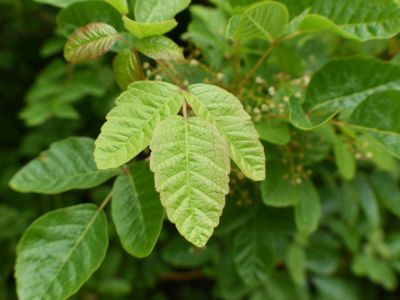What Plants Irritate the Skin?
Most people are familiar with poisonous plants like sumac, poison ivy, and poison oak. However, some of our most innocuous plants are toxic and carry poisons that can cause visible reactions. There are several types of skin irritant plants, some of which cause allergic reactions. Geraniums, tomatoes, roses, and even our holiday favorite, the poinsettia, have the potential to cause skin irritation. Not all plants affect all people the same way. Unfortunately, the best way to find out what you are sensitive to is to come into contact with the plant in question and assess your reaction. Most reactions are not allergic in nature but are a result of mechanical or chemical injury.
Garden Plant Irritants
Mechanical injury that causes skin irritation is the result of serrated edges, thorns, stinging hairs, and other items that can penetrate or scrape skin. They deliver the toxin into the tissue, which combined with a wound, causes a reaction. Chemical injury is topical in nature and is found in plants like Euphorbia, which have a latex-based sap that causes sensitivity in some individuals. There are also garden plant irritants delivered in a combination of the two ways. Additionally, phototoxic plants carry toxins that are not harmful until exposed to sun. Carrots, and even celery, are in this group of skin irritant plants.
Handling Irritating Plants
If you already know you have a sensitivity to a plant, avoid contact. Where contact is necessary, wear long sleeves, pants and gloves. In extreme cases, you should also wear eye protection. Get educated on toxic plants. Even some bulbs such as onions, garlic, tulips, and daffodils can cause skin reactions, so it is wise to have at least hand protection when gardening.
How to Avoid Contact Poisoning
Information is pivotal to knowing how to avoid contact poisoning. The more informed you are about the types of toxicities in the landscape, the better able you can avoid them. Practice sensible precautions and reduce your risk. Place plants in your garden that are toxin-free and keep a close eye on children to prevent them from possible contact with skin irritant plants. Contact your state poison center or extension office for a complete list of common toxic plants in your area. If you do touch a toxic plant, wash the affected area with soap and water and blot gently. Call your doctor if a serious rash or blisters appear in the area. Above all, protect yourself with appropriate garb and take plant identification in your garden seriously.
